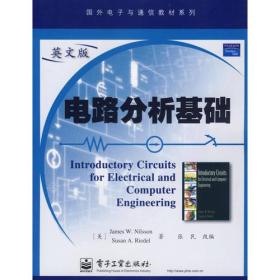
电路分析基础(英文版)
正版二手,均有笔记不影响使用,无赠品、光盘、MP3等。如需购买套装书,请联系客服核实,批量上传数据有误差,默认一本,套装书售后运费自理,还请见谅!
¥ 4 1.0折 ¥ 39.5 八五品
库存17件
山东枣庄
认证卖家担保交易快速发货售后保障
作者张民 改编;[美]尼尔森(Nilsson)
出版社电子工业出版社
出版时间2007-02
版次1
装帧平装
货号9787121038662
上书时间2024-11-09
- 最新上架
商品详情
- 品相描述:八五品
图书标准信息
- 作者 张民 改编;[美]尼尔森(Nilsson)
- 出版社 电子工业出版社
- 出版时间 2007-02
- 版次 1
- ISBN 9787121038662
- 定价 39.50元
- 装帧 平装
- 开本 其他
- 纸张 胶版纸
- 页数 397页
- 字数 582千字
- 【内容简介】
-
本书由浅入深、系统全面地讲解了电子电路及电子系统的基本元件、基本概念、基本分析理论和计算方法,主要内容包括电路基本元件、简单电阻电路分析、电路常见分析法、运算放大器基本应用电路、一阶和二阶电路的分析、正弦稳态分析及其功率计算、平衡三相电路、选频电路及滤波器等。此外,本书结合多年教学经验和生活中的实际应用,给出了大量例题和习题、详尽的图表资料和丰富的实用电路范例。
本书适合作为电气、电子、计算机与自动化等本科专业电路分析或电路理论课程的双语教材,也可供相关学科的科技人员自学或参考。 - 【作者简介】
- James W.Nilsson执教于美国依阿华州立大学39年。退休后任圣母大学、加州州立工业大学(圣路易斯-奥比斯波市)和美国空军学院客座教授。1962年与R.G.Brown合著Introduction to Linear Systems Analysis,1968年撰写Introduction to Circuits,Instruments,and Electronics,1
- 【目录】
-
Chapter 1 Circuit Variables and Circuit Elements
1.1 Circuit Analysis: an Overview
1.2 Voltage, Current, and the Basic Circuit Elements
1.3 The Ideal Basic Circuit Element
1.4 Power and Energy
1.5 Voltage and Current Sources
1.6 Electrical Resistance (OHMÕs Law)
1.7 KirchhoffÕs Laws
1.8 Analysis of a Circuit Containing Dependent Sources
Chapter 2 Some Circuit Simplification Techniques
2.1 Source Transformations
2.2 Superposition
Chapter 3 Techniques of Circuit Analysis
3.1 Terminology
3.2 Introduction to the Node-Voltage Method
3.3 The Node-Voltage Method and Dependent Sources
3.4 The Node-Voltage Method: Some Special Cases
3.5 Introduction to the Mesh-Current Method
3.6 The Mesh-Current Method and Dependent Sources
3.7 The Mesh-Current Method: Some Special Cases
3.8 The Node-Voltage Method Versus the Mesh-Current Method
3.9 ThŽvenin and Norton Equivalents
3.10 More on Deriving a ThŽvenin Equivalent
3.11 Maximum Power Transfer
Chapter 4 The Operational Amplifier
4.1 Operational Amplifier Terminals
4.2 Terminal Voltages and Currents
4.3 The Inverting-Amplifier Circuit
4.4 The Summing-Amplifier Circuit
4.5 The Noninverting-Amplifier Circuit
4.6 The Difference-Amplifier Circuit
4.7 The Comparator
Chapter 5 The Natural and Step Response of RL and RC Circuits
5.1 The Inductor
5.2 The Capacitor
5.3 Series-Parallel Combinations of Inductance and Capacitance
5.4 Natural Response of RL and RC Circuits
5.5 Step Response of RL and RC Circuits
5.6 The Integrating Amplifier
Chapter 6 Natural and Step Responses of RLC Circuits
6.1 Introduction to the Natural Response of a Parallel RLC Circuit
6.2 The Forms of the Natural Response of a Parallel RLC Circuit
6.3 The Step Response of a Parallel RLC Circuit
6.4 The Natural and Step Response of a Series RLC Circuit
Chapter 7 Sinusoidal Steady-State Analysis
7.1 The Sinusoidal Source
7.2 The Sinusoidal Response
7.3 The Phasor
7.4 The Passive Circuit Elements in the Frequency Domain
7.5 KirchhoffÕs Laws in the Frequency Domain
7.6 Circuit Simplifications
7.7 The Node-Voltage Method
7.8 The Mesh-Current Method
7.9 Instantaneous, Average, and Reactive Power
7.10 The rms Value and Power Calculations
7.11 Complex Power and Power Calculations
Chapter 8 Balanced Three-Phase Circuits
8.1 Balanced Three-Phase Voltages
8.2 Three-Phase Voltage Sources
8.3 Analysis of the Wye-Wye Circuit
8.4 Analysis of the Wye-Delta Circuit
8.5 Power Calculations in Balanced Three-Phase Circuits
8.6 Measuring Average Power in Three-Phase Circuits
Chapter 9 Introduction to Frequency Selective Circuits
9.1 Some Preliminaries
9.2 Low-Pass Filters
9.3 High-Pass Filters
9.4 Bandpass Filters
9.5 Bandreject Filters
点击展开
点击收起
相关推荐
— 没有更多了 —



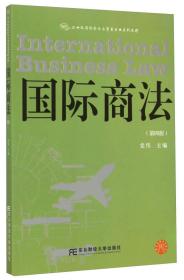
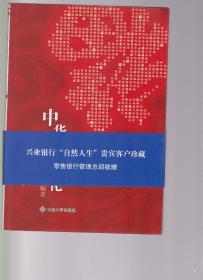


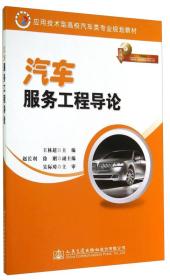
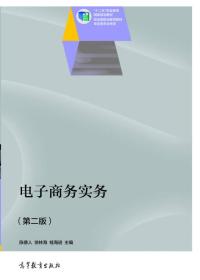
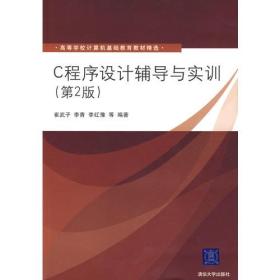
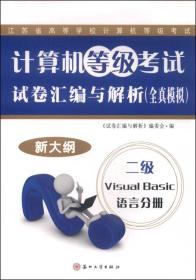




以下为对购买帮助不大的评价